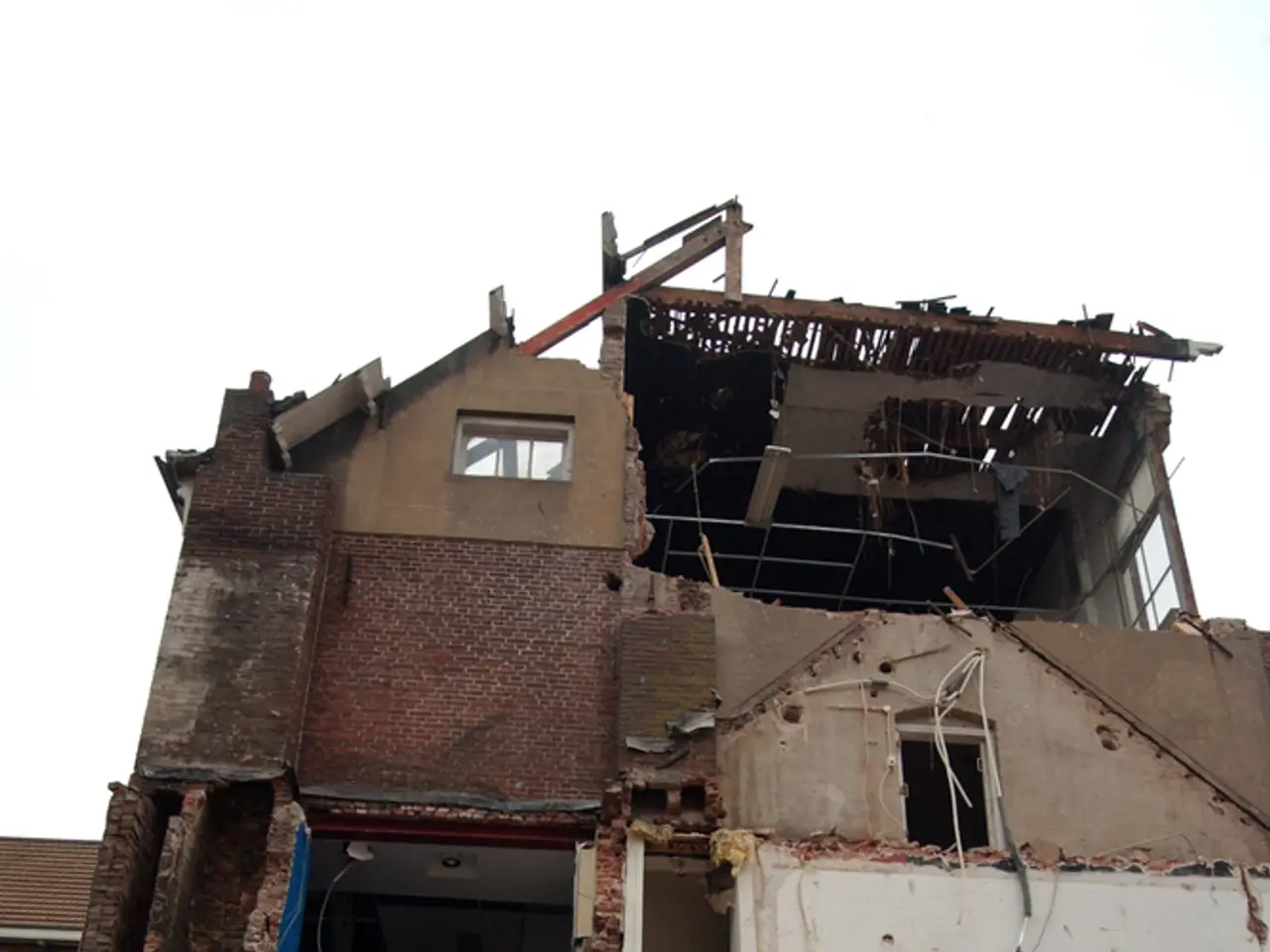Lung Collapse Explanation: Description, Classifications, Causes, and Remedies
Atelectasis and pneumothorax are two distinct lung conditions that, while separate, can sometimes be interconnected. Atelectasis is a condition where airways or air sacs in the lungs collapse or do not fully expand, whereas pneumothorax occurs when air collects between the inner and outer membranes of the lungs, causing pressure that can cause the lungs to collapse.
Causes of Atelectasis: A Comprehensive Look
Atelectasis can be caused by various factors, some of which are surgery, general anesthesia, pleural effusion, and pleurisy. Beyond these, specific causes of nonobstructive atelectasis include hypoventilation due to pain or sedation, surfactant deficiency or dysfunction, acute respiratory distress syndrome (ARDS), pulmonary edema, pulmonary fibrosis, compression atelectasis, neuromuscular diseases, prolonged bed rest or immobility, and adhesive, cicatrization, relaxation, replacement, and compression atelectasis.
Symptoms and Diagnosis of Atelectasis
Symptoms of atelectasis can include shallow breathing, coughing, wheezing or trouble breathing, fever, reduced or absent breathing sounds, crackling when breathing, excess mucus or sputum, and reduced chest expansion during inhalation. A doctor will diagnose atelectasis by asking about symptoms, underlying conditions, medical history, performing a physical exam, and using chest X-ray, computed tomography, ultrasound scan, or bronchoscopy.
Treatment and Prevention of Atelectasis
Treatment for atelectasis may involve medications, breathing exercises, or surgery. Common treatments include inhaled medications, breathing and coughing exercises, assistive breathing machines, sitting upright, getting up and moving around soon after surgery, and, in some cases, surgery to remove fluid, obstructions, growths, correct anatomical structures, or reopen collapsed tissues.
Preventing atelectasis includes quitting smoking, maintaining a moderate weight, using assistive breathing or lung-pressure machines, practicing breathing exercises, treating lung conditions or those that interfere with airflow, ensuring proper pain management, and sitting upright instead of laying down.
Outlook and Complications
The outlook for someone with atelectasis depends on how serious their condition is, the root cause, and any additional underlying conditions. If left undiagnosed or untreated, serious complications can develop, including fluid buildup in the lung, pleural space, or chest, respiratory infections such as pneumonia, and respiratory failure.
In summary, while atelectasis and pneumothorax are distinct conditions, they can sometimes be interconnected. Atelectasis can be caused by various factors, and its treatment and prevention involve a range of strategies. If you suspect you have atelectasis, it is crucial to seek medical attention promptly to prevent potential complications.
[1] Medical Guidelines for Atelectasis Treatment [3] Pulmonary Textbooks: Atelectasis and Its Causes
- Self-care plays a crucial role in preventing atelectasis, as quitting smoking, maintaining a healthy weight, and practicing breathing exercises can help reduce the risk of this respiratory condition.
- The science of medicine provides several treatment options for atelectasis, such as inhaled medications, breathing exercises, and surgery when necessary, in cases where the airways or air sacs in the lungs have collapsed or failed to fully expand.
- Understanding medical-conditions like atelectasis and pneumothorax is essential for health-and-wellness, as being aware of their causes, symptoms, diagnoses, and treatments can help individuals seek appropriate care and prevent potential complications.




